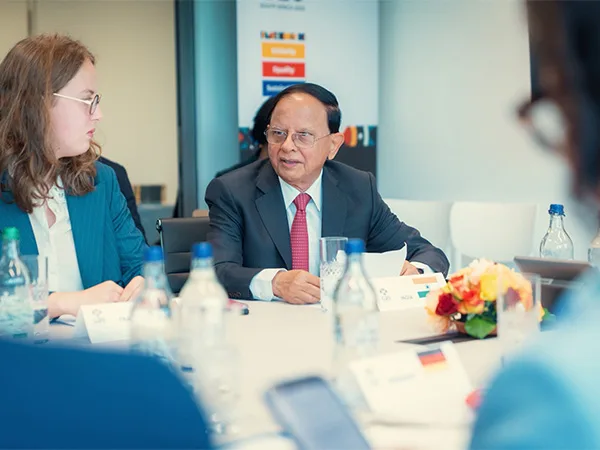GENEVA, June 7: India has called for global cooperation to tackle the growing threat of extreme heat during a Special Session on Extreme Heat Risk Governance organized by the United Nations Office for Disaster Risk Reduction (UNDRR) in Geneva. Dr. P. K. Mishra, Principal Secretary to the Prime Minister, described extreme heat as a “global crisis” and emphasized that heatwaves are no longer seasonal disruptions but systemic risks that threaten densely populated urban regions.
Dr. Mishra’s comments echoed the UN Secretary-General’s warning that rising temperatures are endangering public health, economic stability, and ecological resilience. He highlighted the need for worldwide collaboration to strengthen early warning systems, build climate-resilient infrastructure, and implement inclusive interventions to protect vulnerable populations.
India’s Approach to Heat Risk Management
Dr. Mishra provided insights into India’s proactive approach to heat risk management, under which the country has shifted from reactive disaster responses to a more comprehensive, preventative strategy. Since 2016, the National Disaster Management Authority (NDMA) has issued national guidelines for managing heatwaves, with the latest version revised in 2019. The guidelines have facilitated the implementation of Heat Action Plans (HAPs) in over 250 cities and districts across 23 heat-prone states.
The Ahmedabad Heat Action Plan, which includes early warning systems and community engagement, was highlighted as a successful model for reducing heat-related deaths.
A Holistic Approach to Heat Risk
India has adopted a “whole-of-government and whole-of-society” approach to address the impacts of extreme heat. Dr. Mishra stressed the involvement of various ministries such as health, agriculture, urban development, and education, alongside local knowledge and traditional practices. Schools and primary health centers are integral to the country’s heat management strategy, with schools raising climate awareness and health centers providing frontline support during heatwaves.
In addition, India is working on long-term urban resilience measures like cool roofing, passive cooling centers, greening urban areas, and the revival of traditional water bodies. Urban Heat Island (UHI) assessments are now part of urban planning in many cities to combat heat buildup in urban areas.
Policy Change to Support Heatwave Mitigation
Dr. Mishra also announced a significant policy change, allowing the National and State Disaster Mitigation Funds (SDMF) to be used for heatwave mitigation projects. This new policy will enable local governments, the private sector, and NGOs to co-finance adaptation initiatives. He emphasized that this move reflects India’s commitment to shared responsibility and community-driven resilience in addressing heat risks.
A Call for International Collaboration
While recognizing India’s progress, Dr. Mishra highlighted key global challenges, such as the need for a real-time localized heat-humidity index and affordable, culturally appropriate passive cooling solutions. He also pointed out that certain groups, including women, outdoor workers, the elderly, and children, are especially vulnerable to extreme heat, and urged for international mechanisms that ensure equitable adaptation measures.
Dr. Mishra concluded by reaffirming India’s support for the UNDRR’s Common Framework for Extreme Heat Risk Governance. He stressed the importance of shared knowledge, capacity-building, and joint research efforts to address the rising threat of extreme heat. “India is committed to sharing its expertise and technical capabilities to help global partners build a more resilient and coordinated response,” he stated.

